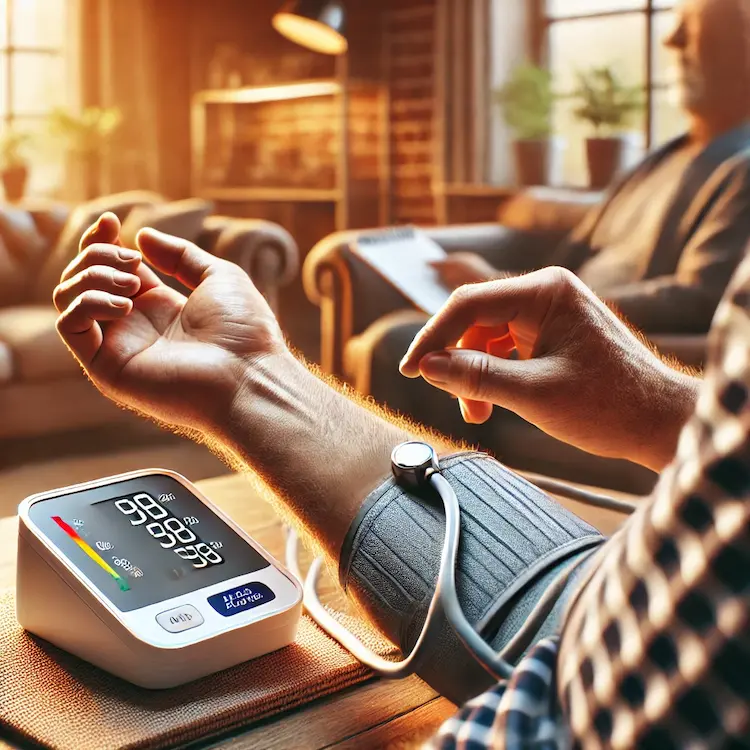Stroke is a leading cause of death and long-term disability worldwide. According to the World Health Organization (WHO), approximately 15 million people suffer a stroke annually, with nearly 5 million deaths and another 5 million left permanently disabled. One of the primary risk factors for stroke is high blood pressure (hypertension), which can be effectively monitored using a sphygmomanometer (sphyg). Regular sphyg readings help detect abnormal blood pressure patterns, allowing timely intervention and reducing the risk of stroke.
This article explores the connection between sphyg readings and stroke prevention, explaining how accurate blood pressure monitoring contributes to overall cardiovascular health. We will also compare different blood pressure monitoring methods, provide practical tips for managing hypertension, and discuss key statistics and preventive strategies.
The Importance of Sphyg Readings in Stroke Prevention
How Blood Pressure Affects Stroke Risk
Blood pressure is the force exerted by circulating blood on arterial walls. It is measured in millimeters of mercury (mmHg) and recorded as systolic pressure (top number) and diastolic pressure (bottom number). Hypertension increases stroke risk by:
- Damaging Arteries – Persistent high pressure weakens arterial walls, making them more prone to rupture.
- Encouraging Clot Formation – Narrowed arteries due to hypertension increase the likelihood of blood clots, which can block blood flow to the brain.
- Reducing Brain Oxygen Supply – Poor circulation can deprive the brain of oxygen, leading to ischemic strokes.

Key Blood Pressure Ranges and Stroke Risk
According to the American Heart Association (AHA), blood pressure is categorized as follows:
| Blood Pressure Category |
Systolic (mmHg) |
Diastolic (mmHg) |
Stroke Risk Level |
| Normal |
<120 |
<80 |
Low |
| Elevated |
120-129 |
<80 |
Moderate |
| Hypertension Stage 1 |
130-139 |
80-89 |
Increased |
| Hypertension Stage 2 |
≥140 |
≥90 |
High |
| Hypertensive Crisis |
>180 |
>120 |
Emergency |
Even mild hypertension (130–139 mmHg systolic) can double the risk of stroke compared to normal blood pressure levels.
Comparing Blood Pressure Monitoring Methods
There are various methods to measure blood pressure, each with advantages and limitations:
Manual Sphygmomanometer (Mercury or Aneroid)
Pros:
- Highly accurate when used by trained professionals.
- Mercury sphygmomanometers are considered the gold standard in clinical settings.
Cons:
- Requires a trained user.
- Mercury-based devices are being phased out due to environmental concerns.
Digital (Oscillometric) Blood Pressure Monitors
Pros:
- Easy to use for home monitoring.
- Some models sync with mobile apps for tracking.
Cons:
- Can be less accurate if not used correctly.
- Readings may be affected by movement or improper cuff size.
Ambulatory Blood Pressure Monitoring (ABPM)
Pros:
- Provides continuous readings over 24 hours.
- More accurate for detecting blood pressure fluctuations.
Cons:
- More expensive.
- May cause discomfort due to frequent inflation.
Wrist vs. Upper Arm Monitors
| Feature |
Upper Arm Monitors |
Wrist Monitors |
| Accuracy |
Higher |
Moderate |
| Ease of Use |
Requires proper cuff placement |
More convenient |
| Best for |
Medical settings, home use |
Travel, occasional monitoring |
Upper arm monitors are recommended for regular monitoring, as wrist monitors can be sensitive to arm position.
Practical Tips for Stroke Prevention Through Blood Pressure Monitoring
Regular Monitoring and Record-Keeping
- Check blood pressure at least twice a day (morning and evening).
- Keep a blood pressure log to track trends over time.

Lifestyle Changes to Control Hypertension
- Healthy Diet: Follow the DASH (Dietary Approaches to Stop Hypertension) diet, which emphasizes fruits, vegetables, whole grains, and low-sodium foods.
- Exercise: Aim for 150 minutes of moderate activity per week.
- Limit Alcohol & Tobacco: Both increase blood pressure and stroke risk.
- Reduce Stress: Chronic stress can elevate blood pressure levels.
Medication Adherence
If prescribed antihypertensive medication, follow the doctor’s recommendations. Common types include:
- ACE Inhibitors (e.g., Lisinopril) – Relax blood vessels.
- Beta-Blockers (e.g., Metoprolol) – Reduce heart workload.
- Diuretics (e.g., Hydrochlorothiazide) – Help remove excess sodium and fluid.
Skipping medication increases the risk of hypertensive crises and stroke.
Health and Societal Impact of Stroke Prevention
Financial and Healthcare Burden
- Stroke care costs the U.S. healthcare system $46 billion annually (CDC).
- 80% of strokes are preventable with proper management of hypertension.
Stroke Rehabilitation Challenges
- Many stroke survivors suffer from paralysis, speech difficulties, and cognitive impairments.
- Preventing strokes improves quality of life and reduces long-term disability rates.
Global Stroke Trends
- Asia and Africa have the highest stroke mortality rates due to limited access to hypertension care.
- Western countries have seen a decline in stroke cases due to improved blood pressure control measures.
Conclusion
Sphyg readings play a crucial role in stroke prevention, as regular monitoring allows for early detection and management of hypertension. With the right tools—whether manual, digital, or ambulatory blood pressure monitors—individuals can take proactive steps to reduce stroke risk. By adopting healthy lifestyle habits, adhering to medication, and regularly tracking blood pressure, people can significantly lower their chances of experiencing a stroke.
Key Takeaways
- Hypertension is the leading cause of stroke—monitoring blood pressure helps prevent it.
- Different monitoring tools (manual, digital, ABPM) provide varying levels of accuracy and convenience.
- Blood pressure categories define stroke risk levels; even mild hypertension doubles stroke risk.
- Lifestyle changes (diet, exercise, stress reduction) are essential for hypertension control.
- Regular tracking and medication adherence improve long-term health and reduce stroke cases.
Actionable Recommendations
- Check your blood pressure daily, especially if you have risk factors like diabetes or family history of stroke.
- Choose an accurate blood pressure monitor—upper arm models are best for home use.
- Maintain a heart-healthy lifestyle, including a low-sodium diet and regular exercise.
- Consult a doctor for personalized hypertension management and medication guidance.
- Encourage awareness—share information on stroke prevention with family and friends.

